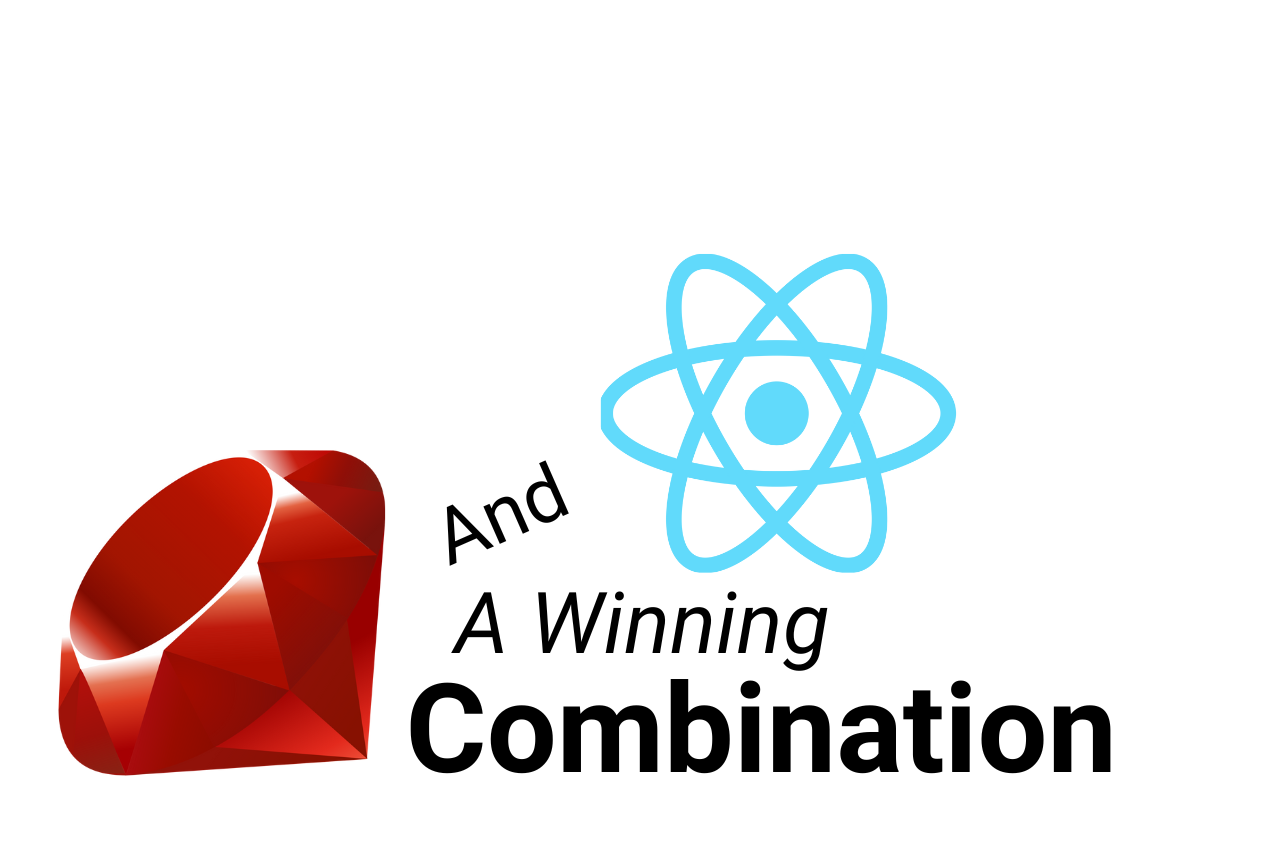Why React with Ruby on Rails: An Winning Combination to Build Modern Web Apps?
 Musangamfura Emmanuel
Musangamfura Emmanuel
As a Ruby on Rails software developer, I have had the pleasure of working with various frameworks and technologies. However, when it comes to building modern web applications, the combination of React with Ruby on Rails has proven to be an absolute game-changer. This dynamic duo offers a powerful and efficient solution for software startups and developers alike. In this blog post, I will share why React with Ruby on Rails is the perfect combination for building cutting-edge web apps, focusing on rapid development, easy maintenance, a supportive community, and enhanced user experience.
1. Rapid Development: The Need for Speed
In today's fast-paced digital landscape, speed is of the essence. Startups need to develop and iterate on their web applications quickly to stay ahead of the competition. React with Ruby on Rails offers the perfect synergy to achieve rapid development:
Efficiency: React's component-based architecture promotes reusability, allowing developers to build modular UI components that can be easily reused across different parts of the application. This accelerates development time and improves overall efficiency.
Hot Reloading: React's hot reloading feature enables developers to see changes in real-time, eliminating the need for manual page refreshes. Combined with Ruby on Rails' seamless integration, developers can instantly see the impact of code changes, boosting productivity and reducing development cycles.
Asset Pipeline: Ruby on Rails’ asset pipeline simplifies the management of JavaScript and CSS files, ensuring optimal performance and faster page load times. It streamlines the process of bundling and minifying assets, resulting in a more efficient development workflow.
2. Easy to Maintain: Keeping it Manageable
Maintaining a web application is just as important as building it. React with Ruby on Rails makes maintenance a breeze:
Structured Codebase: React's component-based approach and Ruby on Rails' MVC (Model-View-Controller) architecture contribute to a clean and organized codebase. The separation of concerns allows developers to easily understand and modify different parts of the application, enhancing maintainability.
Learning Curve: React's declarative syntax and intuitive nature make it relatively easy to learn and understand, even for developers new to the framework. Ruby on Rails, with its emphasis on convention over configuration, offers a gentle learning curve, enabling developers to quickly become productive.
Testing Capabilities: Both React and Ruby on Rails provide robust testing frameworks. React has tools like Jest and React Testing Library, while Ruby on Rails comes with built-in testing capabilities using frameworks like RSpec and Capybara. This comprehensive testing support ensures that code changes can be made with confidence and reduces the likelihood of introducing bugs.
3. Community: The Power of Collaboration
A strong and supportive community is invaluable for software startups and developers. React with Ruby on Rails benefits from vibrant communities that foster collaboration and knowledge-sharing:
Active and Engaged: React and Ruby on Rails boast large and active communities of developers. From online forums and chat groups to meetups and conferences, there are numerous opportunities to engage, seek guidance, and share experiences with like-minded individuals.
The abundance of Resources: The React and Ruby on Rails communities have created a wealth of tutorials, guides, and documentation to support developers at all skill levels. These resources cover a wide range of topics, from beginner concepts to advanced techniques, ensuring that developers have the necessary support to build robust web applications.
4. Enhanced User Experience: Delighting Your Users
The user experience is a critical aspect of any modern web application. React with Ruby on Rails offers a compelling combination to create engaging and responsive user interfaces:
Single-Page Applications (SPAs): React excels at building SPAs, where page transitions are seamless and user interactions are smooth. This results in a more fluid and enjoyable user experience, reducing the perceived latency of page loads.
Server Request Time: Ruby on Rails, with its efficient routing and server-side rendering capabilities, significantly reduces the time taken to retrieve and render data on the server. This ensures faster server request times and a snappy user experience.
Performance Optimization: React's virtual DOM (Document Object Model) and Ruby on Rails' caching mechanisms help optimize performance. By rendering only the necessary components and caching frequently accessed data, web applications built with this combination can deliver exceptional performance even with complex user interfaces.
5. Modularity: Flexibility and Scalability
Flexibility and scalability are crucial considerations for web application development. React with Ruby on Rails offers the necessary modularity to accommodate growth and changing requirements:
Component Reusability: React's component-based architecture allows for the creation of reusable UI components. These components can be easily shared and used across different parts of the application, promoting modularity and code reusability.
Scalability: Ruby on Rails' scalability options, such as database optimizations, caching, and load balancing, combined with React's componentization, enable web applications to handle increased user traffic and growing datasets. Startups can confidently scale their applications as they gain traction and expand their user base.
Conclusion: A Winning Combination
React with Ruby on Rails offers a compelling solution for software startups and developers seeking to build modern web applications. With its emphasis on rapid development, easy maintenance, a supportive community, and enhanced user experience, this combination is hard to beat. By leveraging the power of React and Ruby on Rails, startups can quickly build robust web applications that captivate users and scale effortlessly.
So, why wait? Dive into the world of React with Ruby on Rails and unlock the potential of modern web app development!
Disclaimer: This blog post is for informational purposes only and does not constitute professional advice. Always consult with a qualified professional for specific guidance related to your software development projects.
Subscribe to my newsletter
Read articles from Musangamfura Emmanuel directly inside your inbox. Subscribe to the newsletter, and don't miss out.
Written by

Musangamfura Emmanuel
Musangamfura Emmanuel
I am a Full-stack Developer who is passionate about Creating simple creative solutions to complex problems with HTML5 | CSS3 | JavaScript | NodeJS | React | Redux | Ruby | PostgreSql and Rail.